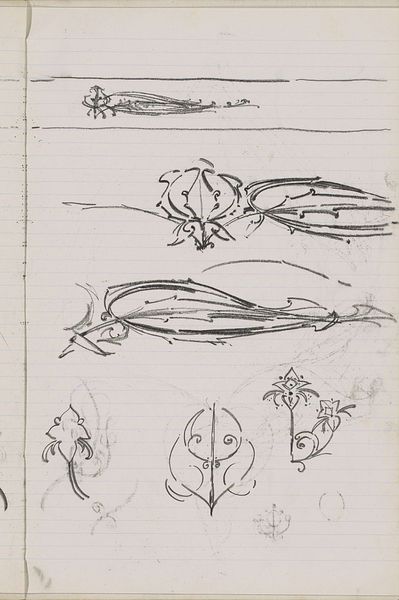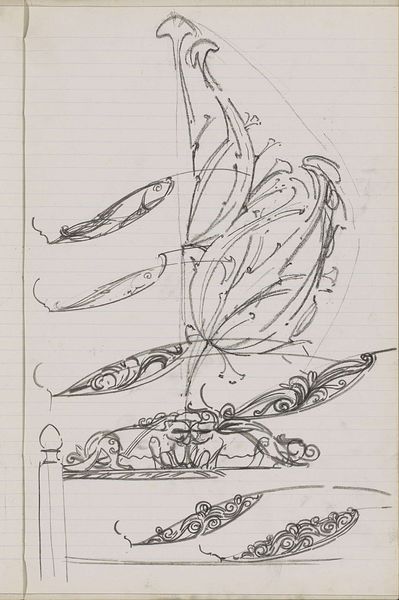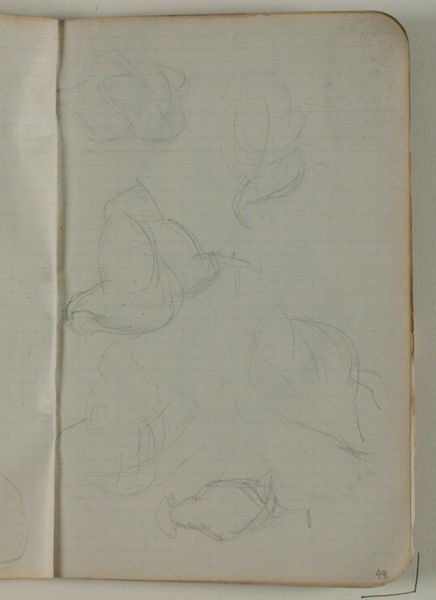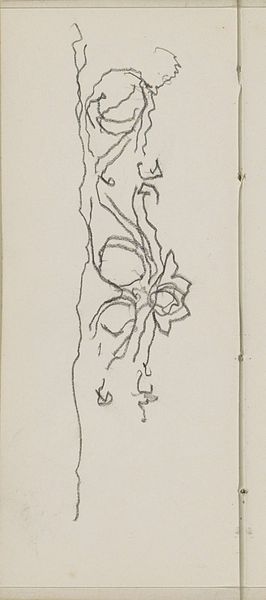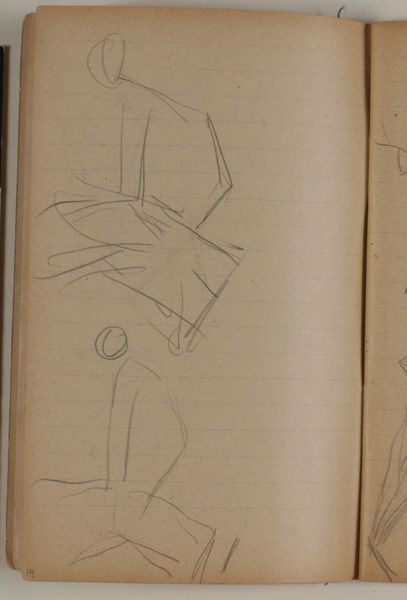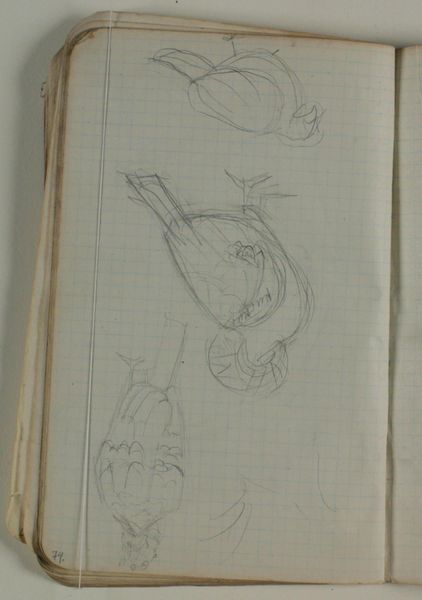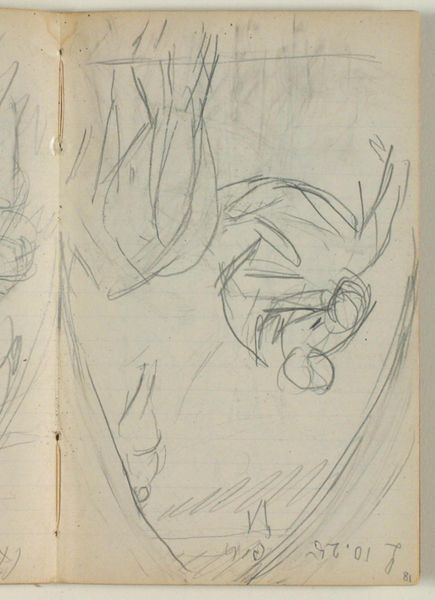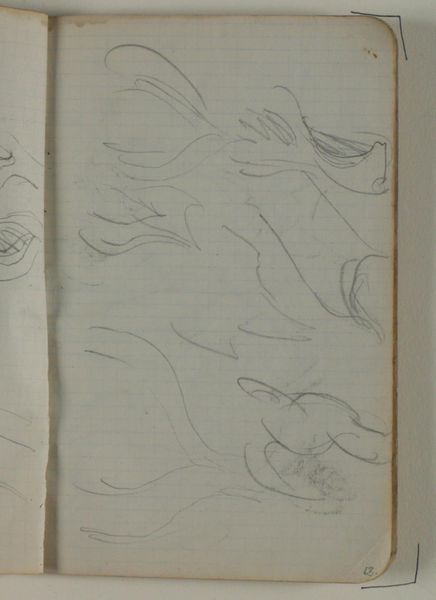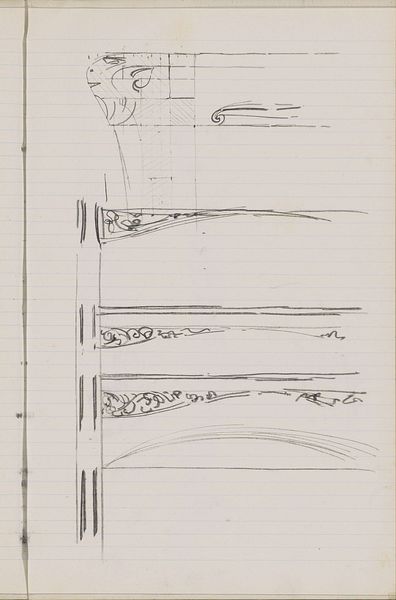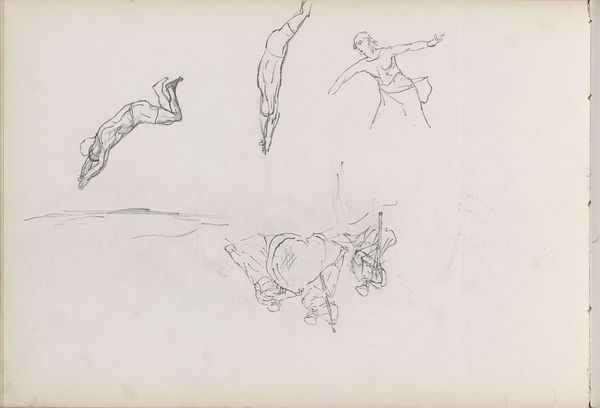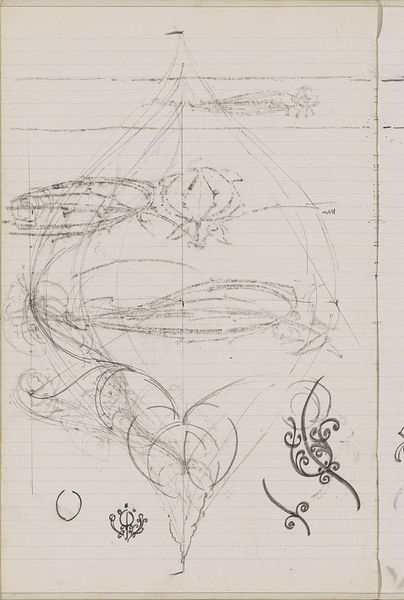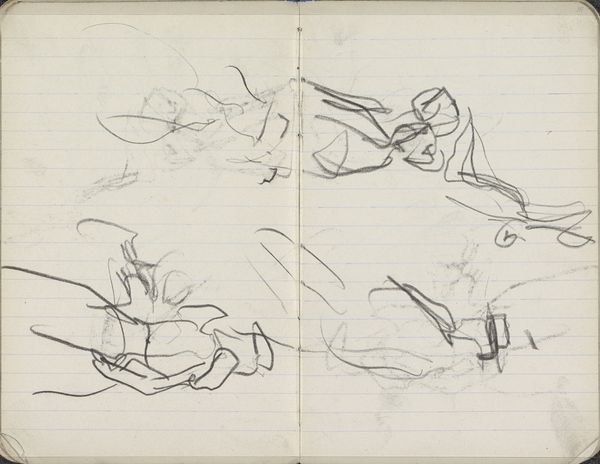
drawing, paper, ink
#
drawing
#
organic
#
art-nouveau
#
pen sketch
#
paper
#
ink
#
ink drawing experimentation
#
line
#
sketchbook drawing
Copyright: Rijks Museum: Open Domain
Editor: We're looking at Gerrit Willem Dijsselhof's "Florale ornamenten," created around 1901. It's an ink drawing on paper. It feels very much like a study, quick and exploratory. What strikes you most about it? Curator: I see the materiality of the piece as paramount. It’s ink on paper, a relatively accessible and inexpensive medium. Dijsselhof's choice challenges the traditional hierarchy between ‘high art’ and the more practical realms of design and craft, which Art Nouveau often embraced. Are these studies for something more, perhaps for wallpaper or textiles? Editor: Possibly! Knowing Dijsselhof also worked with woodcuts, would you say this could be practice for a larger print? Curator: Precisely. Look at the deliberate mark-making. The bold lines, the varied pressure. It's about exploring the capabilities of the pen and ink itself, rather than strictly replicating botanical accuracy. What's fascinating is considering the labour involved, the repetitive gesture of creating these organic forms, possibly towards serial production in another medium. This reflects the industrialization of art and design during the Art Nouveau period, wouldn’t you agree? Editor: Yes, and it raises interesting questions about mass production versus unique artwork, something artists were grappling with. It does seem more about process than product here. Curator: Absolutely. Consider where the materials came from – the source of the ink, the manufacture of the paper. All tied to global trade networks and economic systems of the time. How does this impact our understanding of the work itself? Editor: That definitely adds a new layer. I'm thinking about where those raw materials were sourced, and the labor behind making them. Curator: Precisely! It pulls us away from simply admiring its aesthetic appeal and prompts us to consider its connection to the broader economic and social context of its creation. Editor: This has really shifted my perspective. Seeing it not just as a pretty sketch, but as a record of material and labor practices. Curator: Exactly. Art doesn’t exist in a vacuum; it is intrinsically linked to its means of production.
Comments
No comments
Be the first to comment and join the conversation on the ultimate creative platform.
